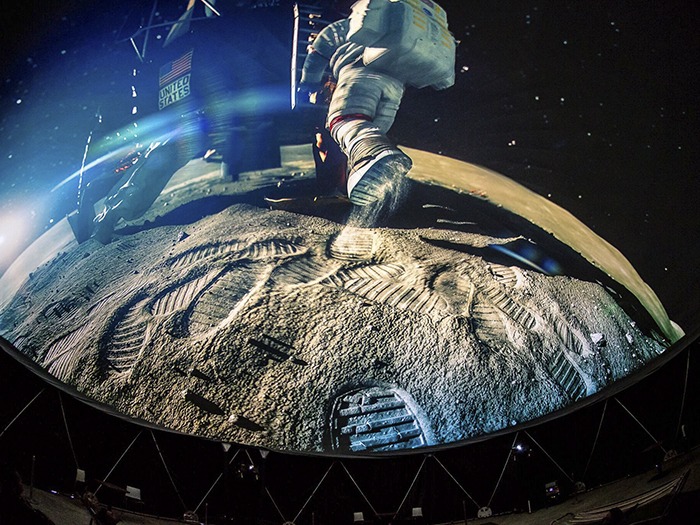360° Theatre was the immersive cinema event by fulldome mapping specialist, GaiaNova, held at London’s Cody Dock. The event exclusively made use of Avolites Ai R8 Media servers to video map the interior of one of GaiaNova’s 18M projection domes with a diverse range of speciality designed 360-degree video over the course of two days.
Content was created for the showcase by a host of visiting artists, including new media artists Bertie Sampson and Michaela French and creatives from The Royal College of Art’s Fulldome Research Group (FDRG). The National Space Centre’s (NSC) planetarium film, We are Stars was also screened regularly throughout the event.
“For me, fulldome projection is simply the most immersive of the shared cinematic experiences available to us,” said Philip Mayer, founder of GaiaNova alongside business partner Ben Stern. “When it’s done right, the effect is incredibly three-dimensional. It’s as if the dome has disappeared and one is looking up into the infinite – and unlike stereoscopic 3D, there is no requirement to wear any silly glasses.”
GaiaNova’s fulldome network setup centres around their house-rack, this contains a main Ai R8 media server driving six projectors, a backup Ai R8 media server and one control monitor. Also included is a Lightware 16 x 16 DVI matrix switch and a battery-backup UPS power supply.
“We have been using Avolites since day one,” said Mayer. “What attracted us to the Ai media server was its combination of price and performance. When we were first working with Ai there was simply no other system that could drive so many projectors from a single box – at any price. Using any other system would have required syncing multiple servers together, and spending a lot more money for an inferior result.”
To achieve the seamless 360-degree look, GaiaNova trusted Avolites’ pioneering camera and projector-based mapping solution, Autoblend, to deliver the solution. This feature builds automatic warp and blend files that calibrate to the curve of a projection surface.
“For us, AutoBlend is the killer feature in Ai for working with domes,” commented Mayer. “It allows us to warp and blend six projectors to map the dome and achieve one continuous, circular image. Ai does this, in our minds, with absolutely unrivalled speed and quality.”
Once all the projectors are in place and receiving a video signal, Mayer and Stern can map a dome in about 20 minutes. “I’ve mapped domes manually in the past and it was always a horrible experience,” explained Mayer. “It would take a full day and the result was never that great if you looked closely. With AutoBlend, in addition to the speed, the result is seamless, which is essential to the sense of 360-dergee immersion.”
In the dome environment content that might look acceptable on a computer monitor, or in a regular projection environment, will not always display well in a dome.
“Our domed projection screen covers an area of over 450 square metres,” said Mayer. “The image covers the viewer’s entire field of vision. Any imperfections in playback, any slight jitter in frame-rate, is multiplied. I know Avolites has worked hard on delivering such smooth playback, and it shows. We’re playing 3k x 3k content at 30 or 60 frames per second, and it looks like silk. These are big files. In our work, we often joke that so called HD footage is merely a low-resolution preview.”
360° Theatre was a free event held on the 7th and 8th July. The event comes as part of Fulldome UK, an event produced by GaiaNova in partnership with NSC creative, i-DAT –University of Plymouth– and other organisations. The next instalment will be the return of GaiaNova’s Fulldome UK bi-annual festival, to be held in November 2018.


